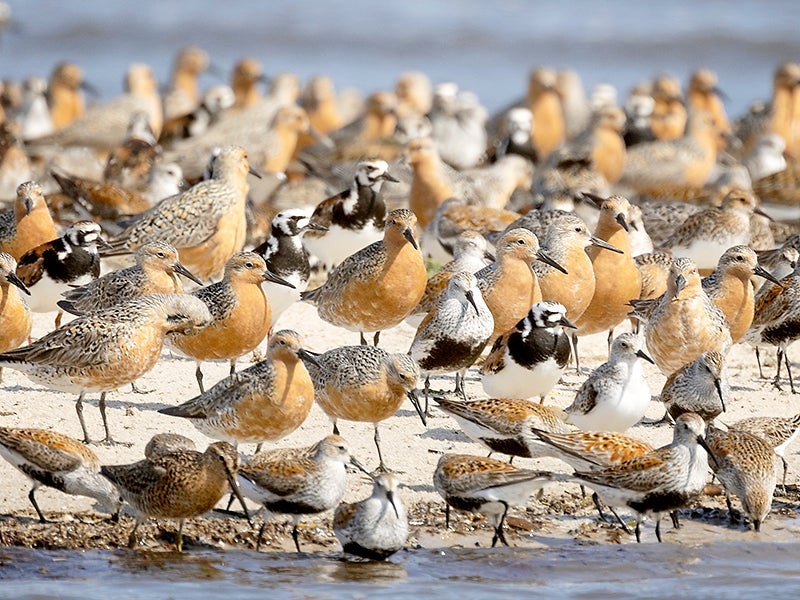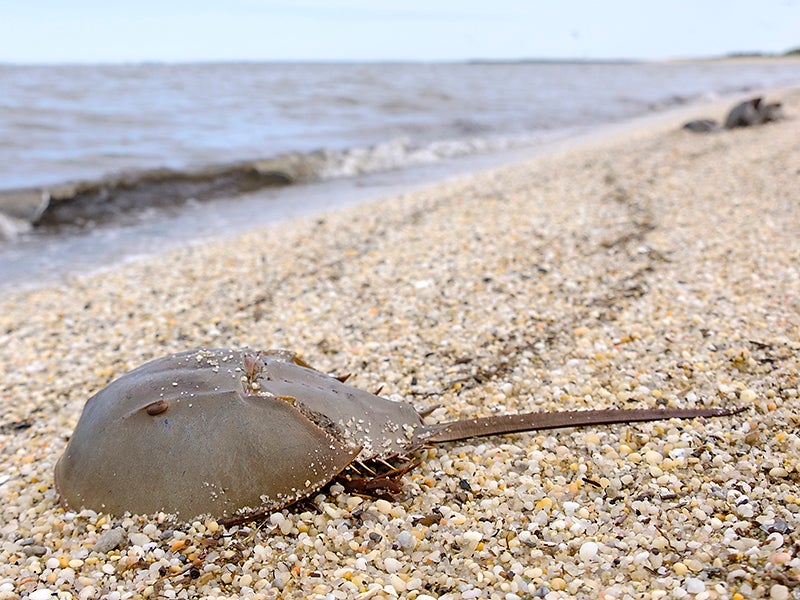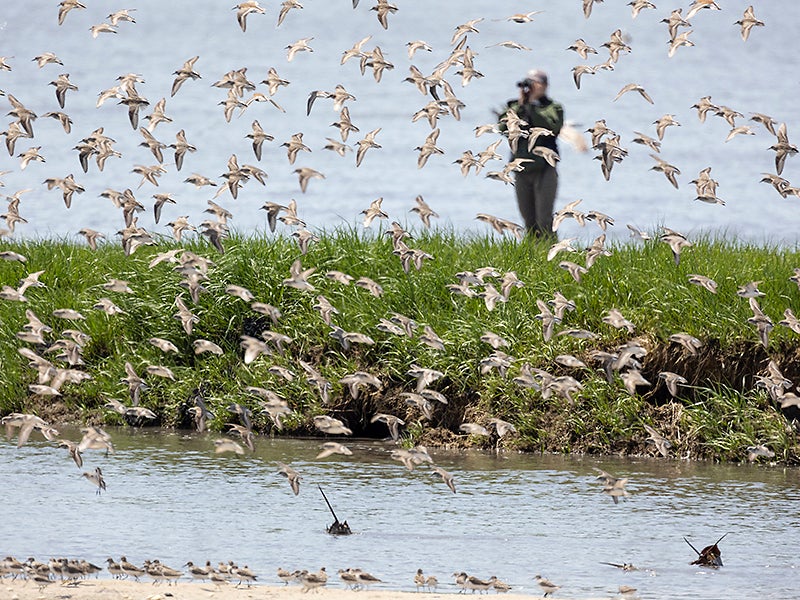What a Shorebird Can Teach Us About the Biodiversity Crisis
Throughout the animal kingdom, increasing pressures from industry are putting endangered or threatened species like the red knot at risk.

This page was published 2 years ago. Find the latest on Earthjustice’s work.
Every year, the red knot shorebird completes one of the most epic migrations in the animal kingdom.
Red knots commonly fly from the southern tip of South America, in Tierra del Fuego, all the way to their breeding grounds in the Arctic . For many thousands of red knots, this more than 9,000-mile journey includes a crucial stop in Delaware Bay, where the birds replenish with horseshoe crab eggs before completing their migrations.
Unfortunately, due largely to the overharvesting of horseshoe crabs by industry, there have not been enough eggs in recent years. As horseshoe crab numbers languish, the shorebird — which is listed as threatened under the Endangered Species Act — has suffered as well. Despite the reduced populations of horseshoe crabs and red knots, a regional fisheries commission has repeatedly weighed a proposal to lift the prohibition on killing female horseshoe crabs for use as fishing bait, which would have left the red knot with even less to eat.
But thanks to pressure from Earthjustice, our partners, and environmental advocates across the country, the commission ultimately decided not to authorize 2023 or 2024 harvests of female crabs. We have now prevented two bad decisions, but we will need to keep the pressure on for the commission to do the right thing in future years and ensure long-term protection. Moreover, the existing management of horseshoe crabs in Delaware Bay has proven inadequate to sustain a reliable food source for migrating shorebirds, even without the further degradation that would have been inflicted by the new expanded harvest proposal.

A horseshoe crab in the Delaware Bay near Fortescue, N.J. (Aristide Economopoulos for Earthjustice)
A growing body of evidence indicates that many red knots are now bypassing Delaware Bay altogether, and the much-needed nourishment the region once provided, as the egg resources on the bay are no longer reliable for the birds. Red knot numbers remain vastly diminished from their historical levels in Delaware Bay.
This story is not unique to the red knot. Throughout the animal kingdom, increasing pressures from industry are putting endangered species at risk. Habitat destruction is the largest driver of biodiversity loss globally. Roughly a million of the Earth’s estimated 8 million species are threatened with extinction in the coming decades. Species such as the red knot, which annually undertakes an extraordinary migration that tests the limits of their endurance, are at the leading edge of this biodiversity crisis. But if we cannot sustain the conditions that allow red knots to survive, other species will follow them on a downward spiral toward extinction as the ecosystems that sustain the web of life – including, ultimately, us – continue to unravel. Protecting the diverse range of species and the habitat on which they rely is more important than ever.
While it ultimately listened to public pressure for 2023 and 2024, the Atlantic States Marine Fisheries Commission (ASMFC) continues to utilize a flawed computer model that recommended a female harvest. Not only is the computer model itself fatally flawed, but modelers have also manufactured data to fill in key model inputs for most of the last 10 years that justify higher harvest proposals. Conservation groups have repeatedly raised the alarm about the computer model, since killing female crabs for use as fishing bait would only add to the problem of egg scarcity that is depleting the migratory stopover.

Researchers from Wildlife Restoration Partnerships study semipalmated sandpipers and other shorebirds as they come through the Delaware Bay in May 2022. (Aristide Economopoulos for Earthjustice)
It is often easy for government agencies to make decisions that favor industry at the expense of a vulnerable species — and to do so without properly informing the public. As these losses continue to mount globally, we are now faced with a biodiversity crisis as epic in scale as the red knot’s migration. While the commission did not authorize a harvest of female crabs the last two years, it does continue to utilize the underlying computer model. Until that stops, the risk of a female harvest will arise again in future years. It is up to all of us to continue to shine a light on what this would do to both the horseshoe crab and red knot populations in Delaware Bay.
Species in our natural world are critically dependent on one another for survival. ASMFC cannot authorize a harvest of female horseshoe crabs in Delaware Bay without also harming the already threatened shorebird that has traveled halfway around the world to feast on its shores. The two are inextricably linked. It is one of the most incredible spectacles in the natural world — the spawning of hundreds of thousands of horseshoe crabs coinciding perfectly with the arrival of the red knots, providing the population the exact nourishment needed to continue their journey to the Arctic.
The Endangered Species Act entitles the threatened red knot to protections, which ASMFC must commit to upholding. Industry’s short-term interests and quests for profit must not determine whether our most vulnerable species are protected. Earthjustice and our partners will continue to use every legal tool available to protect our biodiversity, including the world-renowned Delaware Bay migratory stopover.
Originally published on August 25, 2022.
The Biodiversity Defense Program fights to reshape our relationship to lands, water, and wildlife everywhere by confronting the major drivers of the decline in nature, including habitat destruction and over-exploitation of wildlife.